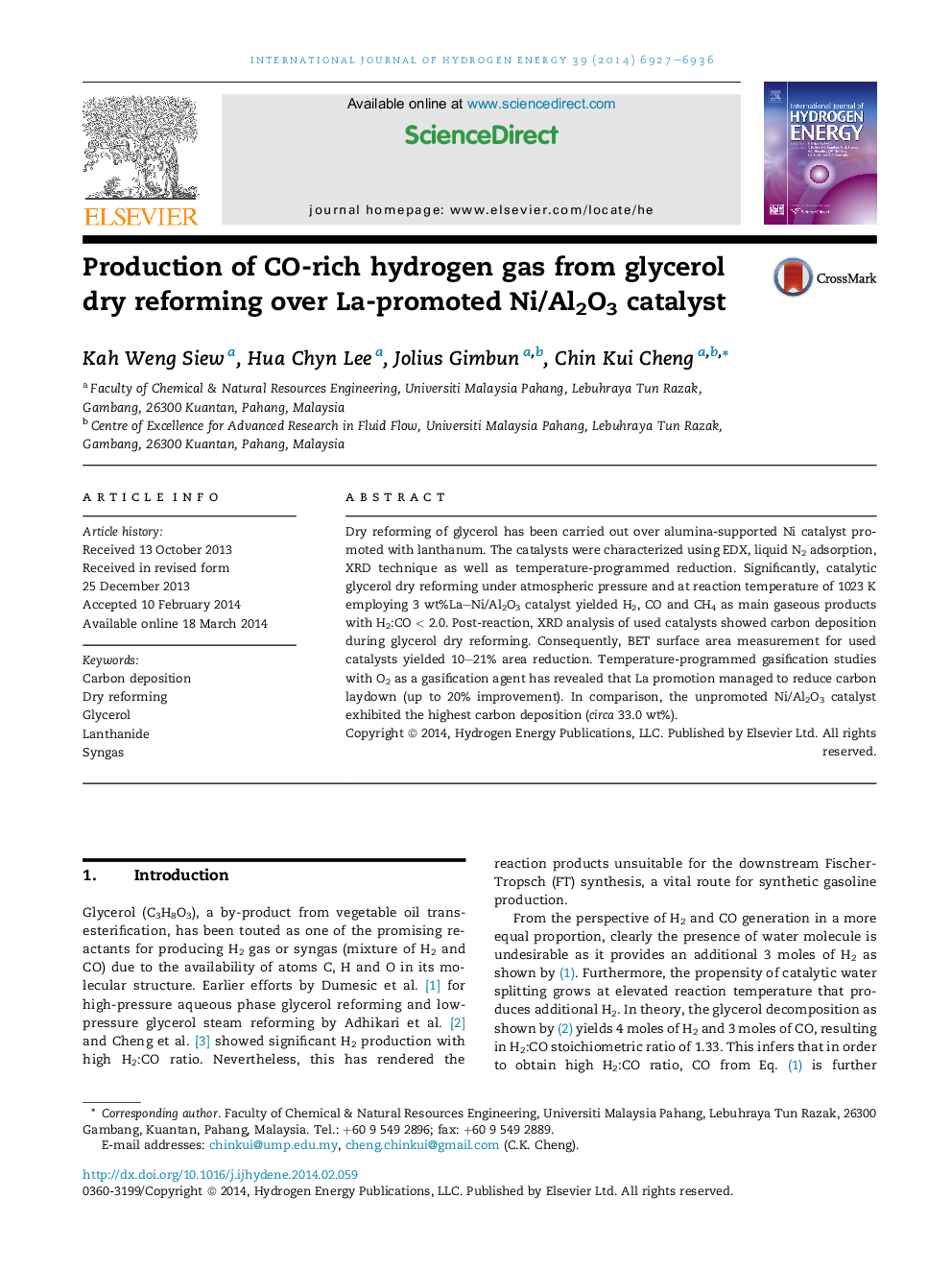| Article ID | Journal | Published Year | Pages | File Type |
|---|---|---|---|---|
| 1273447 | International Journal of Hydrogen Energy | 2014 | 10 Pages |
•The incorporation of La as promoter reduced both the size of particle and the amount of deposited carbon.•Syngas with H2:CO ratios of less than 2.0 can be obtained from glycerol dry reforming.•H2 and CO was primarily produced from glycerol decomposition.
Dry reforming of glycerol has been carried out over alumina-supported Ni catalyst promoted with lanthanum. The catalysts were characterized using EDX, liquid N2 adsorption, XRD technique as well as temperature-programmed reduction. Significantly, catalytic glycerol dry reforming under atmospheric pressure and at reaction temperature of 1023 K employing 3 wt%La–Ni/Al2O3 catalyst yielded H2, CO and CH4 as main gaseous products with H2:CO < 2.0. Post-reaction, XRD analysis of used catalysts showed carbon deposition during glycerol dry reforming. Consequently, BET surface area measurement for used catalysts yielded 10–21% area reduction. Temperature-programmed gasification studies with O2 as a gasification agent has revealed that La promotion managed to reduce carbon laydown (up to 20% improvement). In comparison, the unpromoted Ni/Al2O3 catalyst exhibited the highest carbon deposition (circa 33.0 wt%).
Graphical abstractFigure optionsDownload full-size imageDownload as PowerPoint slide
